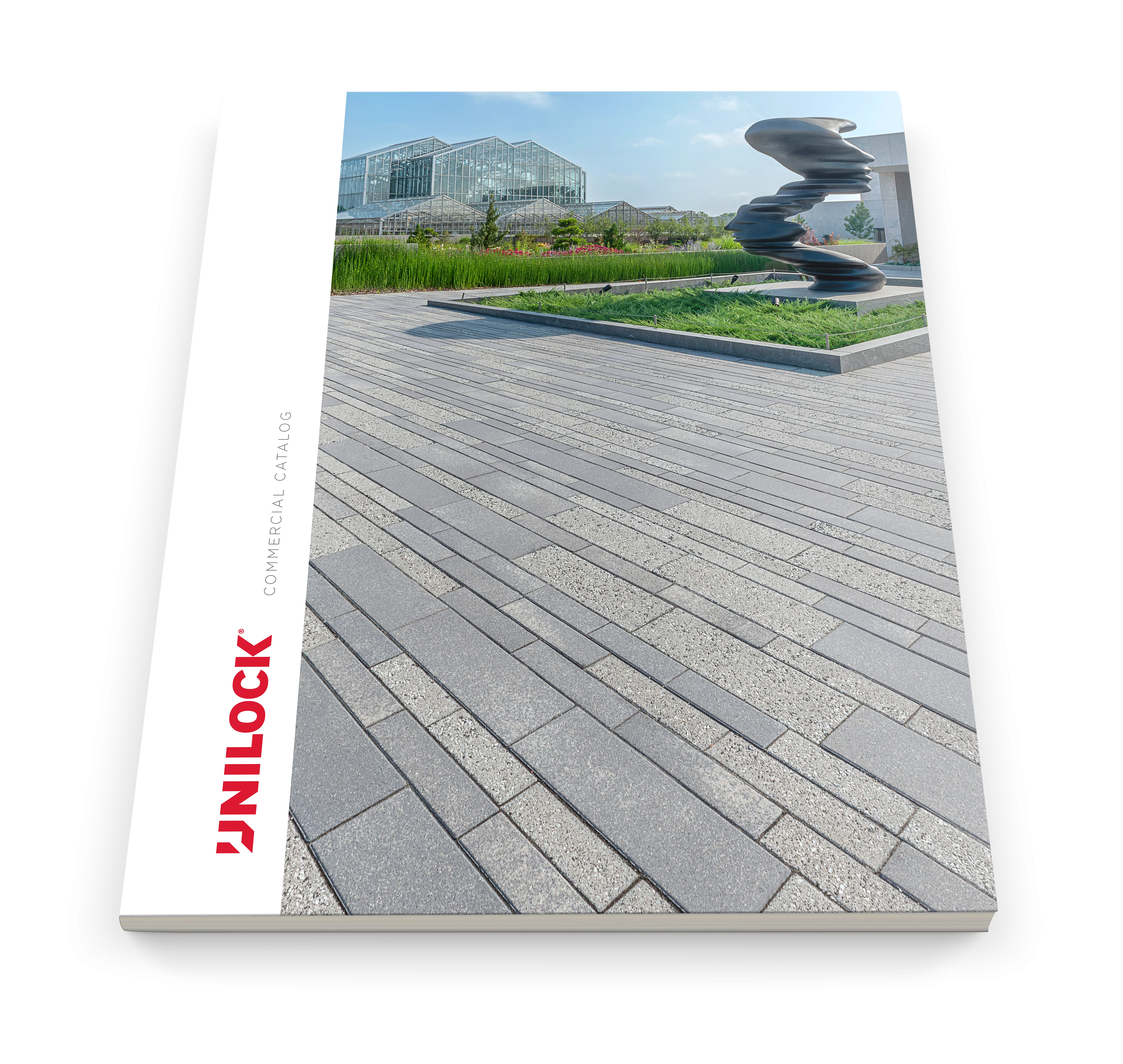Reducing Heat Islands with Light-Colored Pavers

Heat Islands & Their Impact
Built structures and paved surfaces absorb and radiate heat from the sun to a greater extent than natural landscapes or rural areas. When there is a high concentration of buildings, roadways and other infrastructure and a lack of natural vegetation, ‘heat islands’ occur.
These islands contribute to higher daytime temperatures and reduced nighttime cooling, creating a situation that causes urban centers to stay warmer, longer.
This can impact our communities and environment in several ways including:
- Higher energy consumption and costs from increased use of air conditioning
- Increased air pollution and greenhouse gas emissions from power plants meeting electricity demands
- Decreased human health and wellbeing from excessive heat

Note: Graph demonstrating surface and air temperature differences during the day and night across different land use areas. From U.S. Environmental Protection Agency. (n.d). Learn About Heat Islands. (https://www.epa.gov/heatislands/learn-about-heat-islands)
Strategies for Reducing Heat Islands
As the climate crisis continues to affect our environment with record-breaking temperatures and more frequent heat waves, heat island effect will intensify the impacts. However, there are strategies that can be implemented to minimize the effects on microclimates and human and wildlife habitats. These strategies include: increased tree and vegetation cover, living/green roofs, and light surfaces/cool pavements.
Research conducted in New York, a city that suffers from increased temperatures due to heat islands, has shown that while increased vegetation cools surfaces more effectively, implementing a light surface heat mitigation strategy can contribute to the greatest cooling potential when available space is taken into account. Many large cities don’t have the space required to plant enough new trees and greenery for an effective heat island reduction strategy. Therefore, the most attainable approach, given the available space for implementation, is to redevelop the large areas of dark, paved surfaces with lighter surface materials. Projects in urban areas like 61 E Banks Roof Deck, Playground 52, and Education First, Hult Building have opted for light-colored pavers.
Pavement Options
Light-colored paving materials have a high solar reflectance that aid in the reduction of surface temperatures and minimize the amount of heat that is absorbed into the pavement. The Solar Reflectance Index (SRI) is a criterion used by USGBC that measures values of sunlight and radiation bouncing from built surfaces. It is used to measure urban heat island effects in city centers. Dark pavements have low SRI values, whereas light pavements typically have higher SRI values. Combine the choice of light colors with a permeable paver for added cooling benefits. Permeable pavers can lower surface temperatures through evaporative cooling. They are designed with special spacer bars that allow air, water, and water vapor into the voids, keeping the material cool when wet. Therefore, careful selection of surface materials and opting for lighter colors can increase cooling potential and help cities reduce urban heat island effects.
At Unilock, we have paver and slab color options that have a high solar reflectance, which qualify them as a material that contributes to heat island reduction. Products include: Umbriano™,Series™, and Arcana™(Note: Not all color options of these products qualify).
Explore the Unilock Solar Reflectance chart which outlines the available colors that will reduce surface temperatures, while also meeting the criteria to achieve potential LEED credits for Heat Island Reduction – Non-Roof.
Heat Island Reduction – Non-Roof: LEED v4.1
Paving materials with a three-year aged solar reflectance (SR) value of at least 0.28. If three-year aged value information is not available, use materials with an initial SR of at least 0.33 at installation OR use an open grid pavement at least 50% pervious • 2 points (except Healthcare – 1 point). See LEED v4.1 for more specific site calculations
Heat Island Reduction & The Future of Design
Addressing the climate crisis in design requires thoughtful planning of paved surfaces like sidewalks, roadways, and rooftops. While color options of pavers are an excellent tool in creating unique designs, space-defining elements, and unity with existing buildings and infrastructure, it is important to remember the effects of color selection on our environment. The right paver colors can minimize heat island effect, help decrease energy consumption, and decrease air pollution. By working with your Unilock Representative, they can help you find the best product and color options to help you achieve your heat island reduction goals and to help make our cities cooler. Connect with your Unilock Representative to explore the possibilities!
References
Rosenzweig, C., W. Solecki, and R. Slosberg. 2006. Mitigating New York City’s Heat Island with Urban Forestry, Living Roofs, and Light Surfaces. A Report to the New York State Energy Research and Development Authority (PDF).
U.S. Environmental Protection Agency. (n.d). Learn About Heat Islands.
https://www.epa.gov/heatislands/learn-about-heat-islands
U.S. Environmental Protection Agency. (n.d). Heat Island Impacts.
https://www.epa.gov/heatislands/heat-island-impacts
U.S. Environmental Protection Agency. (n.d). Reduce Urban Heat Island Effect
https://www.epa.gov/green-infrastructure/reduce-urban-heat-island-effect
U.S. Environmental Protection Agency. 2012. Reducing urban heat islands: Compendium of strategies – Chapter 5: Cool Pavements.
https://www.epa.gov/heat-islands/heat-island-compendium.

